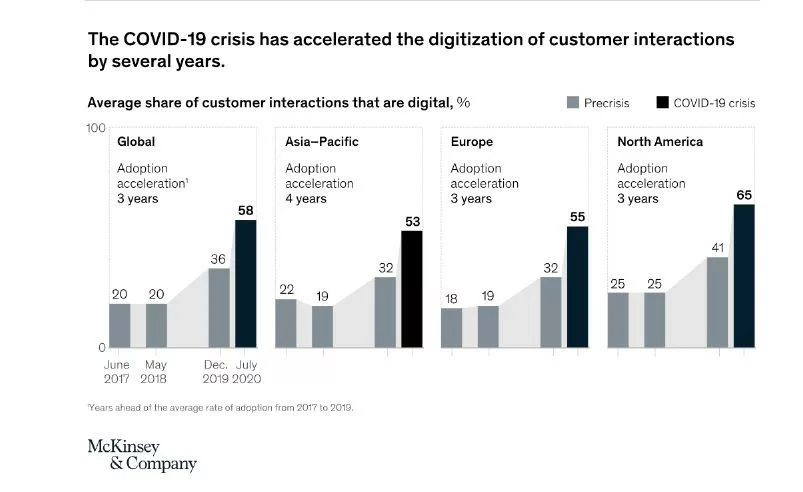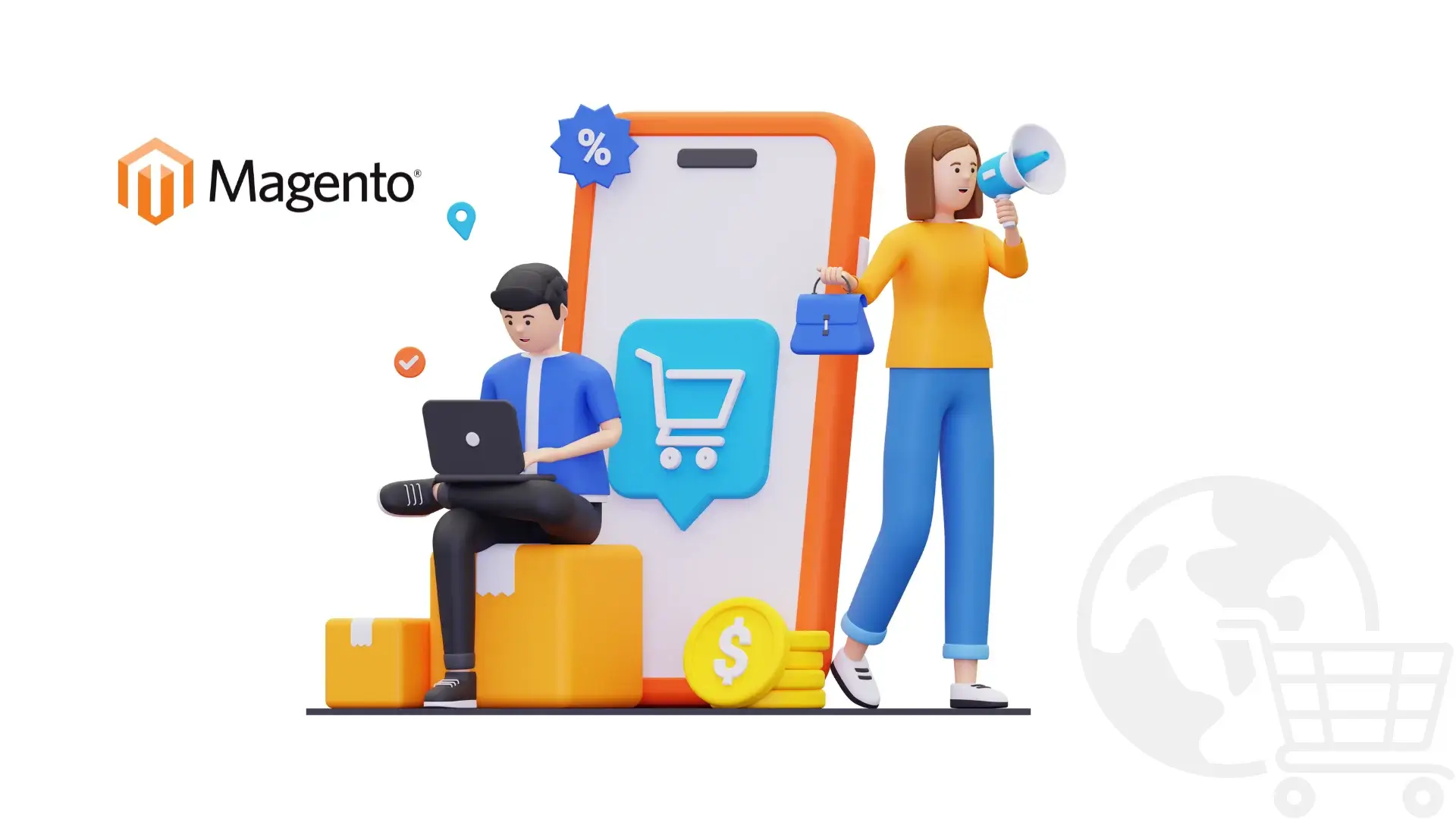Contents
Introduction
In this digital era, where technology is evolving and offering boundless possibilities. One force stands out in the ever-changing corporate landscape, determining the fate of both large and small organizations: digital transformation. It’s not just about technology; it’s about radically changing how we work, interact, and invent. In this fascinating blog, we dispel myths about this paradigm shift, highlight success examples, and examine the enormous potential it contains. Join us as we explore specialized experiences, environmentally friendly methods, career opportunities, efficient processes, and much more.
Discover the untold sophisticated wonders of Digital Transformation Facts, an exemplar of innovation that’s altering the face of modern business!
Opening New Doors – “ 3 I”s
Connected Engagement – Interaction
Digital transformation emphasizes interaction, enhancing customer engagement through chatbots, voice assistants, and immersive interfaces. It revolutionizes communication patterns between humans and technology, like Amazon’s proactive shipping algorithm.
Eric Kimberling is a globally recognized ERP systems expert, explained not only customer engagement and how employee engagement is effective through digital transformation
Seamless Unity – Integration
Integration unifies databases, processes, and systems, breaking down data barriers and enabling real-time data sharing APIs and cloud platforms. Apple’s seamless ecosystem enables seamless device synchronization, resulting in a unified user experience that surpasses individual components.
Unlocking Insights – Insights
Insights, using analytics, AI, Power BI, and machine learning, help organizations identify client preferences and market developments, highlighting patterns, trends, and correlations. This data-driven analysis aids in proactive innovation and strategic decision-making. For instance, Google leverages data-driven foresight to improve services and drive innovation through well-informed insights.
Sustainable Actions “ 3 R”s
Reduce:
Effective resource utilization depends on streamlining processes and getting rid of redundant steps. This idea is powerfully shown by Amazon’s creative approach to order fulfilment and warehousing. They reduced operational costs by using automated technologies, and by accelerating deliveries, they considerably increased customer satisfaction.
Reuse:
Reusing existing resources is a crucial notion for effective operations. The effectiveness of using user data is demonstrated by Netflix’s famed recommendation system. By intelligently reusing information, they may personalize content recommendations, giving their users a more interesting experience without exerting further effort.
Recycle:
Recycling can be used for knowledge, technology, and tangible items. IBM’s shift from hardware-centric to cloud services and AI solutions exemplifies reusing resources, reducing electronic waste and creating new economic opportunities. This innovative technique showcases the long-term benefits of reusing in the digital age.
Eco-Friendly Practices
Embracing the digital transformation facts unlocks sustainable benefits: Green HR practises minimise paper waste, while the metaverse reduces travel, fostering eco-friendly operations for a greener future.
Through their Eco Structure platform, Schneider Electric uses IoT, analytics, and linked devices to improve energy efficiency and lower carbon emissions. Because of the real-time monitoring, resource optimisation, and waste reduction made possible by this, processes are streamlined with no negative influence on the environment. Through their partnership with Schneider Electric, Hilton Hotels were able to reduce their energy usage by 15%.
Fostering Job Opportunities
Instead of diminishing jobs, digital transformation strives to create while boosting them. Digital Transformation facts indicate that Employees are given the freedom to concentrate on strategic thinking, problem-solving, and innovation. New professions in data analysis, AI development, cybersecurity, and user experience design are created by advanced technology, creating exciting high-end work prospects.
In a February 26, 2021, World Economic Forum article, it was stated that automation is projected to generate a net addition of 58 million jobs. A notable historical example is the introduction of ATMs in the 1970s, which led to a reduction in the number of tellers per bank branch from 21 to 13. However, this move also made establishing new branches more cost-effective, subsequently creating opportunities for additional bank tellers who transitioned into financial advisory roles.
Throughout the 1900s, people feared job losses in the agricultural sector during the shift from farming to industry, yet the industrial sector generated more jobs. To succeed in this changing landscape, we must embrace change and prepare ourselves for work with new technologies.
Yann LeCun, a Professor at NYU and Chief AI Scientist at Meta, an AI, ML, and Robotics researcher, highlighted in a tweet how AI fosters new job opportunities. Let’s take a closer look.
AI won’t take your job. But it will transform it and create new ones.
This NYT article has quotes from economists who specialize in the effect of technology on labor markets, such David Autor, Daron Acemoglu, and @erikbryn :
“Everybody I talk to, supersmart people, doctors,…— Yann LeCun (@ylecun) May 21, 2023
Streamlining Operations
Businesses are changing as a result of the intersection of digital transformation and operational efficiency. It involves a purposeful combination of innovation and expertise, driven by data mastery, analytics, and AI for real-time decisions, rather than simply embracing technology. Humans are freed from routine duties by automation, such as the 20% boost in production efficiency achieved by a manufacturing plant utilising RPA.
This change includes collaboration among partners using digital platforms, such a retail consortium that increased turnover by 15% by coordinating inventory systems.
Mastering Supply Chains
Supply chain management and digital transformation are crucial for modern businesses. Real-time data analytics optimize production schedules and adapt output to market variations, ensuring resource efficiency, waste reduction, and customer satisfaction. IoT-enabled order tracking enhances customer experiences and strengthens organizations’ resilience to shocks, as seen in sourcing strategies adapted to supply chain bottleneck.
According to a McKinsey survey, businesses that adopted digital transformation claimed cost reductions of 20–30% in a variety of areas, including customer service and supply chain management.
Chief Digital and Technology Officer at Mars Inc Sandeep Dadlani Explained how digital transformation helps in streamlining supply chain management. Now he is Executive Vice President , Chief Digital &Technology Officer at UnitedHealth Group
Smart Savings
By automating processes and optimizing workflows, we need to admit that this digital transformation can reduce expenses. One example is AI-driven inventory management for retailers. Additionally, by using personalized techniques like data-driven recommendations, it raises client engagement while reducing acquisition costs. Additionally, digital solutions that enable remote work lower office and travel expenses, increasing talent access.
Compared to traditional strategies, digital marketing often delivers a higher ROI. According to a Gartner survey, businesses that spent more than 41% of their marketing budget on digital marketing had the best results.
The COVID-19 pandemic strengthened the use of remote work, while corporations claimed lower costs for office space. For instance, Global Workplace Analytics estimated that companies could save over $500 billion per year in the U.S. by allowing more remote work.
Fuelling Small Business Growth
For SMEs to expand, advertise their products globally, and cross-regional barriers, digital transformation is essential. They are liberated from links to the past, which promotes independence and makes it possible for them to react rapidly to market developments. For instance, Shopify’s user-friendly design, adaptable storefronts, and frictionless payments have accelerated SMEs’ online growth and allowed them to grow, explore new markets, and scale up operations.
Navigating Change: Post-Covid Era
Businesses have been able to adapt and adjust their strategy as a result of the global epidemic thanks in large part to the impact of digital transformation. The quick transition to remote work and consumer engagement via e-commerce platforms, virtual events, and contactless services demonstrated the effectiveness of digital transformation in facilitating change and customer-centric adaptations. Businesses needed the synergy between digital transformation and change management to handle uncertainties, implement new technologies, restructure processes, and promote employee and consumer adoption.

Decentralized Leadership
Digital transformation combines decentralized, accessible, and effective leadership with digital transformation to revolutionize company environments and foster growth.
Decentralization empowers decision-making in traditional hierarchies, as seen in the banking sector with blockchain technology. Digital transformation removes obstacles, allowing accessibility in the educational sector. This balances decentralization and accessibility while retaining steadfast leadership, enabling businesses to achieve unprecedented innovation and success.
Conclusion
As we listed digital transformation facts, In the fast-paced world of contemporary business, digital transformation is a prime example of innovation that combines technology, sustainability, and growth. It opens up a world of opportunities by dispelling the myths of complexity, expenditure, and job loss. It amplifies the power of larger corporations and SMEs, enabling effective operations and environmentally responsible procedures. Its importance has been emphasized in the post-COVID era by demonstrating adaptability and a focus on the client’s needs. Instead of impeding growth, decentralization strengthens leadership. A successful and innovative future depends on digital transformation because of its revolutionary influence and boundless potential. Accept change in this digital age and soar to new heights with us.
Your guiding partner for your digital transformation journey will be Sparity.




